This article describes how to install your new Blink Wired Floodlight Camera.
Please be aware of the following safety information before you start the installation of your Wired Floodlight Camera.
Verify that the supply voltage is correct. Connect fixture to a 100VAC-240VAC 50/60Hz power source.
Working with electricity can be dangerous unless proper safety precautions are taken. If you are not comfortable or are inexperienced with the processes and tools described in this manual, we recommend that you hire a licensed electrician. Installation by a qualified electrician may be required in your area. Refer to your local laws and building codes before performing electrical work; permits plus professional installation may be required by law.
Additionally:
- Only install the Blink Wired Floodlight Camera on a 4-inch round, UL listed, weatherproof electrical box.
- If you don’t have an existing electrical box, or are unsure how to install one in compliance with your local building electrical codes, it is recommended that you hire a licensed electrician for assistance.
- The ground wire must be connected to the light fixture. DO NOT INSTALL if a working earth ground connection is not available.
- Risk of fire. Do not install near combustible or flammable surfaces. Do not connect this light fixture to a dimmer switch or timer.
- To reduce the risk of falling, take extra caution when using a ladder or similar equipment to mount the product.
The Wired Floodlight Camera must be installed on a wall or covered ceiling.
Check your Wired Floodlight Camera box contents
If anything is missing, do not attempt to install your Wired Floodlight Camera.
You should have:
(1) Wired Floodlight Camera with installation kit:
Packet Contents – (1) Metal mounting bracket – (1) S-Hook A (2) #10 – 24 x 1/2“ (M4.6 x 12.6mm) B C (2) #10 – 24 x 1“ (M4.6 x 25mm) D (2) #8 – 32 x 1/2“ (M3.9 x 12.6mm) E (2) #8 – 32 x 3/4“ (M3.9 x 19mm) F (2) #8 – 32 x 1“ (M3.9 x 25mm) G (3) Wire Nuts H (1) Threaded Nut I (2) Silicone Plugs
Installation steps
These instructions are for informational purposes only. Working with electricity can be dangerous unless proper safety precautions are taken. If you are not comfortable or are inexperienced with the processes and tools described in this manual, consult a licensed electrician. A 4-inch round, UL listed, weatherproof electrical box is required for installation.
Note: The installation of your Wired Floodlight Camera requires an outdoor silicone sealant, which is not included with this product. Ensure you have an outdoor silicone sealant available before beginning installation.
1. Turn off power at the breaker.Turn off power at the breaker. This step is essential to keeping you and your new Blink product safe. If you’re not sure which breaker to turn off, turn off the master breaker for your home, or contact a licensed electrician.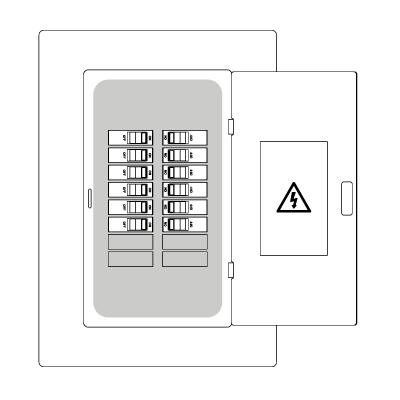
Read more : The Best Time to Take Pictures Outside
2. Select your location.Make sure your install location is 9 feet (2.7m) above the ground for best motion detection.
3. Have your hardware ready.Make sure your Wired Floodlight Camera and hardware are ready to go (screws, metal mounting bracket, and the S-hook). That’s all you’ll need for now.
4. Remove existing wired floodlight (if applicable).Uninstall your existing wired floodlight according to the manufacturer’s instructions. Be sure to remove any wires, wire nuts, screws, and hardware that came with the device.
5. Install the mounting bracket.Using a handheld screwdriver, install the metal mounting bracket. Make sure the side marked “Front” is facing you. Tighten the screws* in the two opposing holes on your electrical box. Not sure which screw to use? See below:
*ScrewsBag A – Standard screws that fit most metal electrical boxesBags B & C – Longer screws for recessed metal electrical boxesBags D, E, & F – Best for plastic electrical boxes with smaller screw holes
Ensure the metal mounting bracket is secure to the electrical box before moving to the next step.
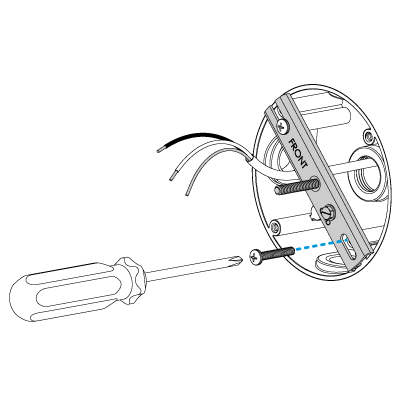
6. Inspect the wires in your electrical box.You should see one black wire (for live), one white (for neutral), and one bare metal or green (for ground).
WARNING: If you can’t easily identify the wires coming out of your electrical box or have difficulty or are uncomfortable in any way connecting them, consult a licensed electrician.
7. Hang your Wired Floodlight Camera.Use the provided S-hook to hang the Wired Floodlight Camera from the mounting bracket while you connect the wires.
8. Find and connect the ground wires.The green wire coming from the Wired Floodlight Camera is a ground wire. Connect this green wire to the green ground screw (marked “GND” on the bracket) and to the existing ground wire inside your electrical box. If needed, use one of the included wire nuts.
If you are unable to identify the ground wire coming out of your electrical box, consult a licensed electrician.
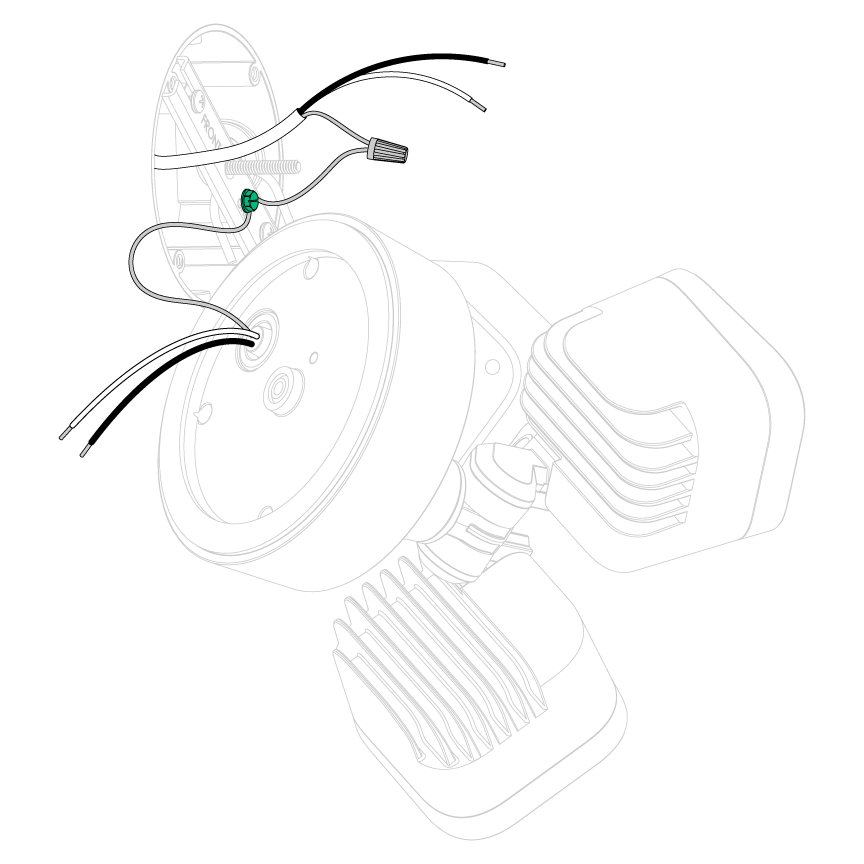
Read more : A guide to the screen of green method
9. Find and connect the power wires.The white wire coming from the Wired Floodlight Camera is a neutral wire. Connect this wire to the white (or neutral) wire coming out of your electrical box using a wire nut.
The black wire coming from the Wired Floodlight Camera is a hot wire. Connect this wire to the black (or hot) wire coming out of your electrical box using another wire nut.
If you don’t have clearly black-colored or white-colored wires coming out of your electrical box, consult a licensed electrician.
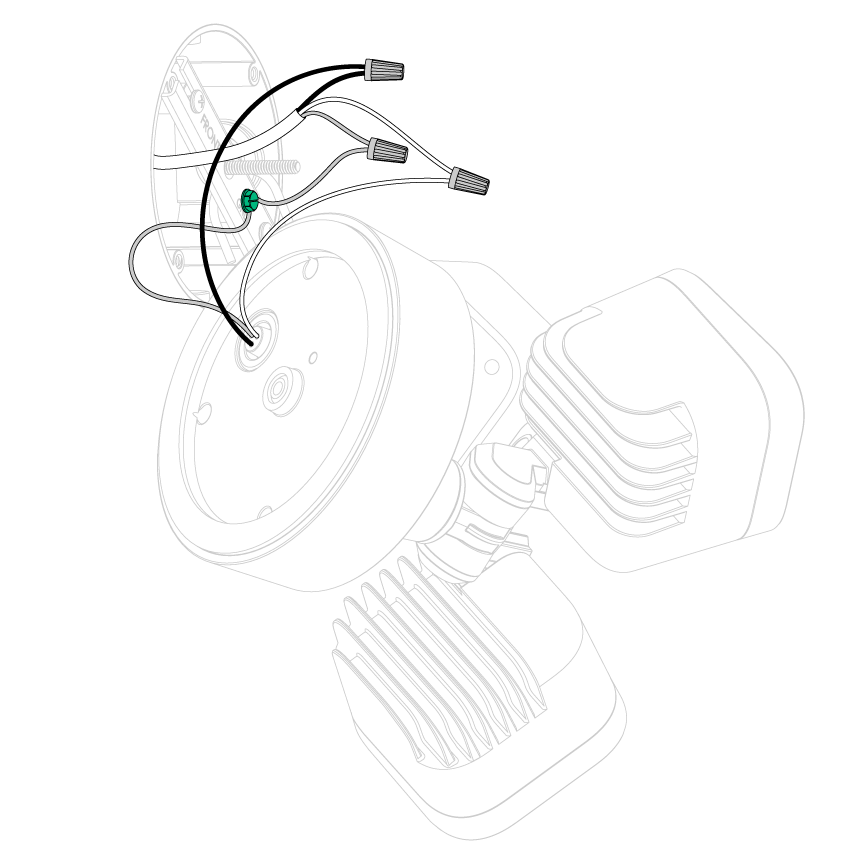
10. Remove the S-hook, then align the light fixture to the electrical box.
11. Place your Wired Floodlight Camera on the bracket.Use a Phillips-head screwdriver to install the threaded nut from the bag marked “H” onto the post.
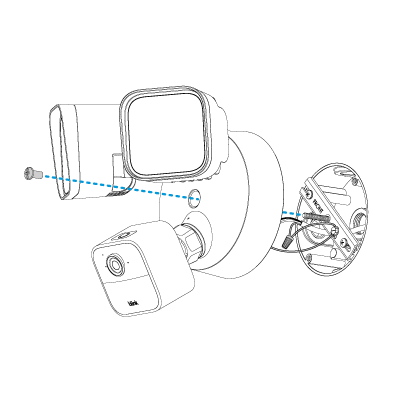
- If you’re installing on a wall, the UP arrow should point up when the wires have been fed through the mounting plate.
- If you’re mounting on a covered ceiling, the arrow should point toward the wall.
12. Insert the silicone plug “I” into the screw hole.Once your Wired Floodlight Camera is secure, apply an outdoor silicone sealant (not included) to seal around the outside of the Wired Floodlight Camera between the light fixture base and the wall or covered ceiling.
![]()
13. Adjust the light heads and camera into the desired position.For covered ceiling mounting, rotate the camera so you can see the Blink logo when looking at the camera.

14. Restore power at the breaker.It may take a moment for your Wired Floodlight Camera to power on. It will be ready for setup when the green light is illuminated and the blue light is slowly blinking.
15. Complete the setup in the Blink Home Monitor app.
Source: https://gardencourte.com
Categories: Outdoor


